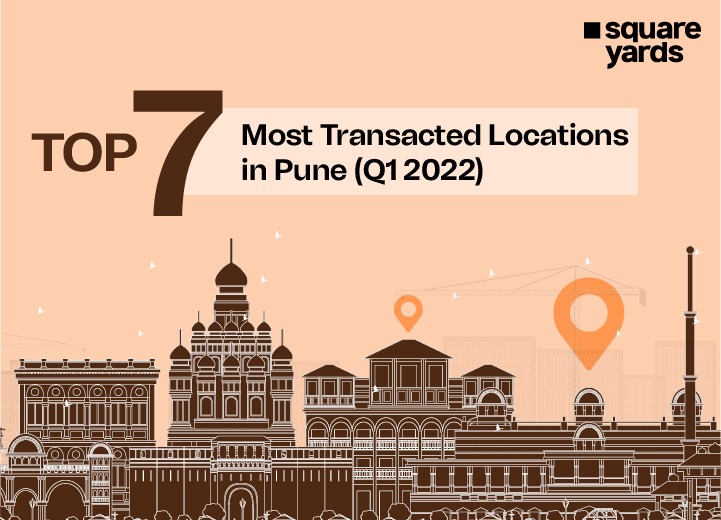From standing in long queues to deposit a cheque to transferring money with just a click, humans and their quest with technology is ever-evolving. Devised using finance and technology, FinTech is an all-encompassing term used to digitise and streamline financial services. It is the same concept that allows you to cash a cheque on a smartphone by just clicking a picture. It’s also the technology that enables you to pay for dinner using online UPI applications. Even though we don’t notice it much, fintech has become a huge part of our daily lives. Due to its vast potential, it can also be integrated in emerging industries.
The exponential surge in the FinTech industry is the result of the digitisation wave in India.
| > 2100+ FinTech startups have been established in India. 67% of these companies have started operations only in the last 5 years! > The market share of the Indian FinTech industry is reckoned to be valued at $150 billion by 2025. |
In this blog, we will take a look at the meaning of fintech and how it affects the various facets of our lives.
Table of contents
What is FinTech?
FinTech can be broadly described as a software or technological advancement related to the core financial services that are applicable to both – computer and mobile based platforms. It also includes hardwares like smart piggy banks or Virtual Reality trading platforms that allow users to carry out financial transactions.
Fintech enables the user to carry out various daily financial tasks like depositing cheques, bill payments, transferring money to other accounts and applying for a loan. It also covers other complex tasks like crypto trading and peer-to-peer lending.
Banks and other financial institutions use fintech for interface and back end applications. They use it for behind the scene applications like keeping track of your financial transactions and providing customer oriented solutions. Customers can use fintech for all kinds of applications, right from filing income tax returns to investing in the stock market without any previous experience.
Financial technology has an application in almost all industries, business models and market demographic. Businesses use fintech for processing payments, accounting, e-commerce applications, etc. In lieu of the pandemic, a large number of businesses are relying on fintech for its innovative features like contactless transactions and other technology backed innovations.
Evolution of FinTech
Even though fintech sounds like a Gen-Z term, it is far from the lingo. Although the term was incorporated in the dictionary in 2018, the core concept finds its origins dating decades ago. For instance, ATMs were once considered to be the epitome of fintech innovations, and so were signature-verifying systems that were first used by the banking sector in the late 1800s.
Recently, the fintech industry has evolved from grassroot level startups to being one of the major pillars of large organisations and multinational companies. Where earlier the term was just associated with a few companies shaking up big banking organisations, today many fintechs have joined sides with the organisations they were looking to replace.
Even during the global lockdown, the fintech industry proved its worth while other sectors faltered. For example, even when the banking institutions in the country closed temporarily, they were able to interact and transact with their customers by utilising fintech-backed advancements. The customers were also able to avoid the long waiting time on customer care services by just accessing them online.
How Does Fintech Affect Customers?
The financial industry on its own is not particularly associated with nimbleness and flexibility. But in today’s financial market, quick results is what drives customer retention.
The implications of fintech also have the capability to improve the concept of financial inclusion. For the majority of our population, fintech acts as a filler for the unbanked, where traditional banking or financial support is lagging behind.
The main reason that fintech has been consistently able to streamline traditional core banking services is because the whole concept is modelled around programming language against the basic human reasoning. Even though most fintech products incorporate both the elements of traditional bankers and complex computer codes, they help the layman to carry out complicated financial processes without having to physically interact with a banker.
How is Fintech Evolving the Indian Banking Sector?
Over the years, the banking industry has transformed from a physical to digital system. The innovative technologies used by the fintech companies are changing the way the country views the banking structure.
Some of the technology-backed systems that indicate the digitisation of the banking industry in India are KYC, Aadhaar Card, card-less money withdrawals, and online customer onboarding.
Let’s take a look at the 5 major ways fintech is transforming the banking industry in India:
Futuristic Self-Service Technologies
The days of standing in a long line to complete the most trivial formalities like form submission are gone. With the emergence of fintech, self-service products give customers access to procedural portals, which were previously only accessible by physically visiting a branch.
The services offered by fintech tools are not only limited to online money transfer but also for core banking services like loans, insurance and account opening. All of this is available just at a click!
This helps the customer by giving them a clear understanding of their financial credibility and learning about the ways to make better financial decisions for themselves and their loved ones.
Intuitive Application Programming Interface
In a bid to make money transfer and other banking processes easier for the consumer, the Reserve Bank of India introduced NEFT, IMPS and RTGS almost a decade ago. This was quickly followed by the introduction of API-backed banking applications. This is how they work in the banking sector:
- It is crucial for banks to incorporate their offerings with third party providers to execute actions digitally and seamlessly.
- To connect the bank’s products to third party providers, the banks will need API technologies.
- In short, API is a middleman that aids in connecting the financial institutions and third parties in real-time and carry out complicated tasks.
- One of the most common examples of fintech’s daily application is money transfer requests made by online UPI applications and received by the institutions, thereby providing a faster and seamless experience to the user.
- APIs enable the third party companies and financial institutions to aid each other’s specialties, to provide innovative services and products to the customer in a streamlined and organised manner.
Instant Payment Features
Even though most of the population in our country relied on cash to make payments in the last decade, point of sale terminals only started emerging in 2016. This was followed by the rapid expansion of mobile internet services and demonetisation, which led to the country accepting digital payments.
The Central Government has been granting the citizens added benefits when they choose to make payments using digital payment methods. The problems arising out of KYC bottlenecks were addressed with the hopes of making India more cash-free and to incorporate new technologies at a fast pace.
Currently, it takes the user only a few seconds to send or receive money from their mobile phone, thereby transforming the way that India spends its money, all the while inculcating a system of accountability.
Automated Voice Bots for Customer Service
The implementation of fintech has meant that many banks have launched their own AI chatbots that are used for customer relationship management. This system was used to replace the traditional chatbot system. These clever products are designed in such a way that they utilise natural language processing capabilities and voice recognition to aid and assist customers.
This integration of voice bots and the financial services industry is similar to what we have seen with Netflix and other customer-oriented products. Just imagine a situation where you can generate a new passcode or open a new bank account in minutes only by using direct voice commands.
Neobanking
One of the major transformations that fintech has brought about in the banking sector is the introduction of Neobanking. Neobanks can be described as banks that have no physical branches and exist solely on digital platforms.
Such banks offer a plethora of core banking services like loans, mutual funds, fixed deposits, savings accounts and lending products which can be easily accessed online on computer and mobile based applications. This trend has emerged during the pandemic with more people looking for convenient digital ways to bank.
The Future of Fintech: Expanding Horizons
As it stands, the fintech industry has been offering a variety of services under the same umbrella. On the other hand, no one can be absolutely certain about what is on the horizon for the fintech market, this can be linked to the worldwide disruption caused due to the Covid-19 pandemic. The subsidies in interest rates and the coronavirus linked uncertainty has changed any presumptions regarding the immediate future of the fintech market.
Much like their customers, many fintech companies have also suffered losses, while many others are scrambling to secure considerable investor funding. At the same time, the need for innovative fintech has been at an all time high, with banking customers and businesses relying more than ever on technology to aid them to navigate their financial standing.
On the other hand, the long term goals of the fintech are comparatively intact. Partnerships and consolidated collaborations between traditional banking providers had always been inevitable, and are now beginning to take shape. With the Central Government announcing plans to introduce regulations in the crypto market in the Union Budget 2022-23, fintech integration has reached a new high. The average banking customer can expect the introduction of various new innovative financial products and services like crypto, blockchains, and peer-to-peer lending.
In Conclusion
Before the advent of fintech, physically carrying out banking procedures seemed like a daunting task to most people. Even though the digitisation of the banking sector has taken decades, the telecommunication sector and the pandemic contributed to its growth.
In 2022, FinTech is expected to provide organisations with a chance to drive the digitisation wave across a value chain that is much more than just a mobile application. The rapid rate at which the concept is being adopted may alter the cost structure of the financial sector while offering innovative products to customers.





































